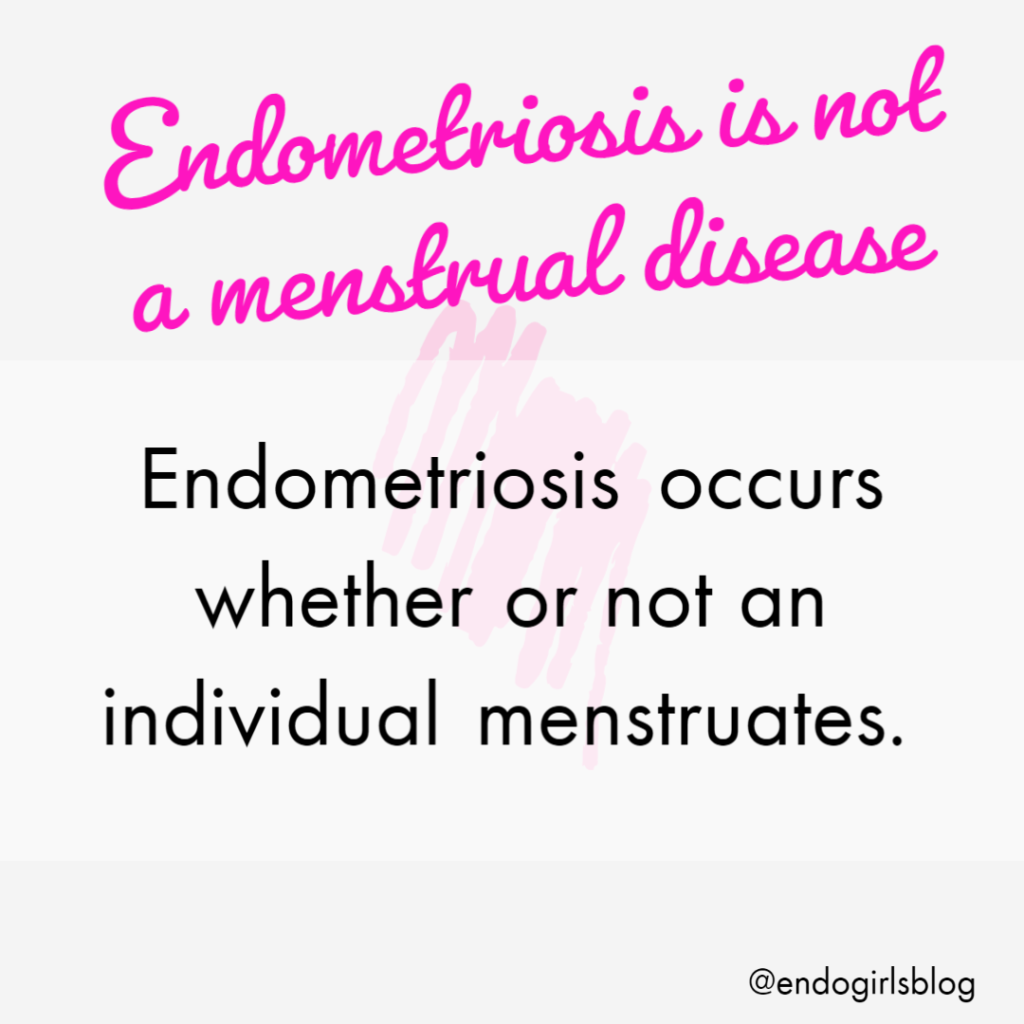Endometriosis is not a menstrual disease

“Though classically viewed as a ‘disease of menstruation,’ a uterus and routine menses are not de rigueur to diagnosis.“
– Guidone H.C. (2020) The Womb Wanders Not: Enhancing Endometriosis Education in a Culture of Menstrual Misinformation. (full citation below.)
Endometriosis is not caused by the backflow of menstrual blood through the fallopian tubes (retrograde menstruation.)
The exact cause of Endometriosis is unknown, but we do know it’s likely a combination of factors stemming from the embryonic origin (Redwine’s theory of Mullerianosis) along with a genetic and epigenetic component. Remember – Endometriosis has been found in fetuses, see source number 1.
This distinction is important so that we turn the focus from Endometriosis being a reproductive disease to a whole body disease. There are individuals with Endometriosis who don’t have a uterus or any other female reproductive organs and individuals who have gone through menopause. Endometriosis is commonly found on various organs and in various parts of the body.
Additionally, Endometriosis behaves independently of the menstrual cycle. How? Endometriosis lesions do not have the same hormone receptor composition as the uterine lining and synthesizes its own Estrogen.
It is important to include all individuals who have or may have Endometriosis – female reproductive organs don’t dictate whether or not someone suffers from this disease.
𝗦𝗼𝘂𝗿𝗰𝗲𝘀::
Guidone H.C. (2020) The Womb Wanders Not: Enhancing Endometriosis Education in a Culture of Menstrual Misinformation. In: Bobel C., Winkler I., Fahs B., Hasson K., Kissling E., Roberts TA. (eds) The Palgrave Handbook of Critical Menstruation Studies. Palgrave Macmillan, Singapore. https://doi.org/10.1007/978-981-15-0614-7_22
Signorile PG, Baldi F, Bussani R, et al. Embryologic origin of endometriosis: analysis of 101 human female fetuses. J Cell Physiol. 2012;227(4):1653-1656. doi:10.1002/jcp
Delbandi AA, Mahmoudi M, Shervin A, et al. Eutopic and ectopic stromal cells from patients with endometriosis exhibit differential invasive, adhesive, and proliferative behavior. Fertil Steril. 2013;100(3):761-769. doi:10.1016/j.fertnstert.2013.04.041